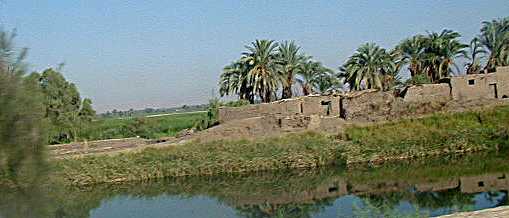
It is a long time from Menes in 3100BCE until the temple of Khnum at Esna in 200 BCE -- almost 2900 years -- and an even longer time if the end point is calculated to the last adoration of Isis at Philae in about 550 CE. During all that time boys and girls were born, grew up, and died; women and men lived and worked, shouted for joy and sobbed in grief, praised and implored many of the same gods in the much the same extremely complex theological/social/political system of thought and action. It is truly an amazing achievement.
Today we see the still magnificent ruins of royal tombs and temples served by priests but, quite naturally, little remains to show for the life of "ordinary" people. They probably were poor by today's standards and certainly they were extremely poor when compared to the untold wealth of their rulers. They could not read the writing they, perhaps, had carved on walls of temples or the tombs of the nobility. What was the life of "ordinary" people like?

It probably changed little over the millennia and may have looked much like that of today's "ordinary people" of the countryside. Certainly it did not look like the gridlocked car traffic in Cairo but, then, the life of Ramesses II didn't look like that of the airline executive. We can try to imagine what life in ancient Egypt might have "looked like" but what we really want to know is: How did it feel to live in a world that had the assumptions about life and death, flood and harvest, that all those ancient people, of whatever station in life, shared? Assumptions that were so different from the ones we take for granted?
We can never know. But we would like to know, nevertheless.
Allan R. Brockway
31 December 2000